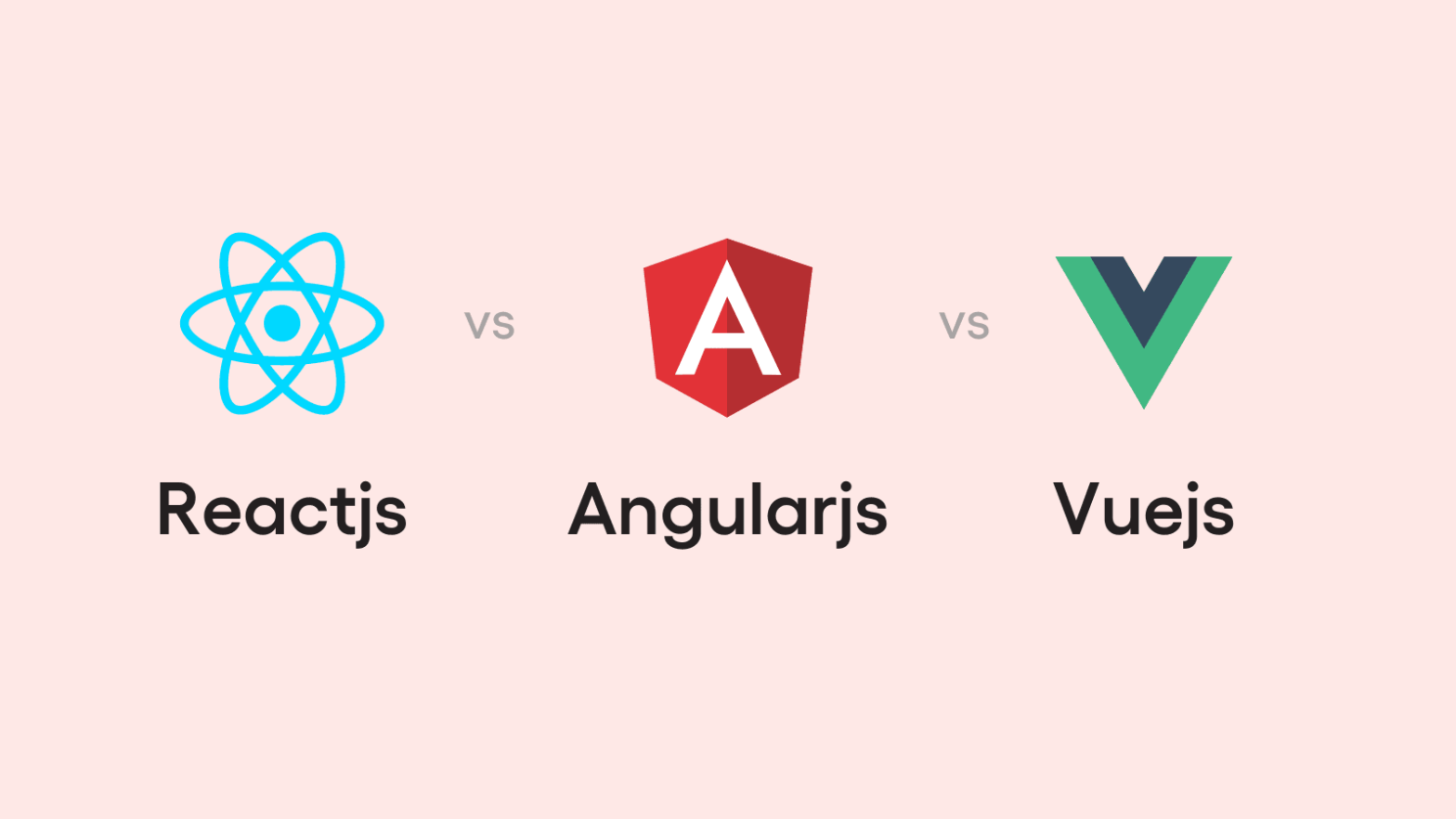JavaScript frameworks have revolutionized web development, making it easier and more efficient to build interactive and dynamic web applications. Among the myriad of options available, React, Angular, and Vue stand out as the most popular and widely used frameworks. In this article, we will delve into a comprehensive comparison of these three frameworks, analyzing their features, performance, learning curve, community support, popularity, industry usage, and suitability for various use cases.
What are React, Angular, and Vue?
Before diving into the comparison, let’s briefly define each of these frameworks:
- React: Developed by Facebook, React is a JavaScript library for building user interfaces. It follows a component-based architecture, allowing developers to create reusable UI components.
- Angular: Originally developed by Google, Angular is a comprehensive web framework that provides a robust structure for building single-page applications (SPAs). It uses TypeScript for development and follows the MVC (Model-View-Controller) architecture.
- Vue: Vue.js, commonly referred to as Vue, is an open-source JavaScript framework for building UIs and single-page applications. It is known for its simplicity and flexibility, making it a popular choice among developers.
History and Background of React, Angular, and Vue
React
React was first released by Facebook in 2013 and has since gained immense popularity in the developer community. Its virtual DOM (Document Object Model) and component-based architecture have contributed to its widespread adoption.
Angular
Angular, initially released by Google in 2010 as AngularJS underwent a complete rewrite and was relaunched as Angular 2+ in 2016. The latest version, Angular 13, continues to evolve with regular updates and improvements.
Vue
Vue.js was created by Evan You and released in 2014. It quickly gained traction due to its ease of integration, small size, and reactive data binding capabilities.
Features of React, Angular, and Vue
React
- Virtual DOM for efficient rendering
- JSX syntax for writing components
- Unidirectional data flow
- Rich ecosystem with tools like React Router and Redux
Angular
- Two-way data binding
- Dependency injection
- CLI (Command Line Interface) for scaffolding projects
- Angular Universal for server-side rendering
Vue
- Reactive data binding
- Virtual DOM with efficient updates
- Vue CLI for project scaffolding
- Single-file components with scoped CSS
Performance Comparison
When it comes to performance, all three frameworks have their strengths and weaknesses. React’s virtual DOM and Angular’s change detection mechanism contribute to their performance optimizations, while Vue’s lightweight nature and efficient rendering make it a strong contender in this aspect.
Learning Curve
The learning curve varies for each framework, depending on factors such as prior experience with JavaScript and familiarity with concepts like component-based architecture and data binding. React’s minimal API surface and focus on JavaScript make it relatively easy to learn, while Angular’s comprehensive feature set and TypeScript integration may steepen the learning curve for some developers. Vue strikes a balance between simplicity and functionality, making it approachable for beginners.
Community Support
A vibrant and active community is essential for the growth and sustainability of a framework. React boasts a large and diverse community, thanks to its backing by Facebook and numerous third-party libraries and tools. Angular benefits from Google’s support and has a dedicated community that contributes to its ecosystem. Vue, although smaller in comparison, has a passionate community and continues to grow steadily.
Popularity and Industry Usage
React has established itself as the dominant framework in recent years, with widespread adoption by tech giants like Facebook, Instagram, and Airbnb. Angular remains popular in enterprise settings, with companies like Google, Microsoft, and IBM leveraging its capabilities for large-scale applications. Vue has seen significant growth in recent years and is increasingly being adopted by startups and smaller companies for its simplicity and performance.
Use Cases and Suitability
Each framework has its strengths and is suitable for different use cases. React excels in building dynamic and interactive user interfaces, making it ideal for applications with complex UI requirements. Angular’s comprehensive feature set and strong TypeScript integration make it well-suited for enterprise applications with large development teams. Vue’s simplicity and flexibility make it a versatile choice for projects of all sizes, particularly those focused on rapid prototyping and small to medium-sized applications.
Pros and Cons of Each Framework
React
Pros:
- Virtual DOM for efficient rendering
- Large ecosystem and community support
- JSX syntax for writing components
Cons:
- Steeper learning curve for beginners
- Lack of official guidance on state management
Angular
Pros:
- Comprehensive feature set
- Two-way data binding for real-time updates
- Strong TypeScript integration
Cons:
- Complex syntax and steep learning curve
- Heavyweight framework with a large bundle size
Vue
Pros:
- Simple and intuitive syntax
- Lightweight framework with small bundle size
- Reactive data binding for efficient updates
Cons:
- Smaller ecosystem compared to React and Angular
- Limited scalability for large applications
How TechDotBit utilizes React, Angular, and Vue to provide web services?
- React Development Services:
- TechDotBit specializes in leveraging React to build highly interactive and dynamic user interfaces for web applications.
- Our team of experienced React developers excels in creating reusable components and implementing state management solutions using tools like Redux or Context API.
- With React’s virtual DOM and efficient rendering, TechDotBit ensures that web applications developed using React are fast, responsive, and provide a seamless user experience.
- Whether it’s building single-page applications (SPAs) or integrating React components into existing projects, TechDotBit offers comprehensive React development services tailored to the unique needs of each client.
- Angular Development Services:
- TechDotBit harnesses the power of Angular to develop robust and scalable web applications, particularly suited for enterprise-level projects.
- Our Angular development team is proficient in utilizing Angular’s extensive feature set, including two-way data binding, dependency injection, and Angular Universal for server-side rendering.
- With Angular’s structured architecture and TypeScript integration, TechDotBit ensures that web applications are maintainable, testable, and easy to scale as business needs evolve.
- Whether it’s building complex dashboards, enterprise portals, or large-scale applications, TechDotBit delivers Angular solutions that meet the highest standards of performance and reliability.
- Vue Development Services:
- TechDotBit embraces the simplicity and flexibility of Vue.js to create elegant and efficient user interfaces for web applications of all sizes.
- Our Vue development team excels in building single-page applications (SPAs), progressive web apps (PWAs), and dynamic UI components using Vue’s reactive data binding and virtual DOM.
- With Vue’s intuitive syntax and lightweight nature, TechDotBit ensures rapid development cycles and seamless integration with existing projects.
- Whether it’s prototyping a new idea, revamping an existing application, or developing a scalable web solution, TechDotBit delivers Vue.js solutions that prioritize performance, usability, and maintainability.
In summary, TechDotBit leverages React, Angular, and Vue to provide a comprehensive range of web development services tailored to the unique needs of each client. By harnessing the strengths of these frameworks, TechDotBit ensures that web applications are not only visually stunning but also performant, scalable, and future-proof.
Conclusion
In conclusion, React, Angular, and Vue are all powerful JavaScript frameworks with their unique strengths and weaknesses. The choice of framework ultimately depends on the specific requirements of the project, the developer’s familiarity with the technology stack, and considerations such as performance, scalability, and community support. By carefully evaluating the features, performance, learning curve, and suitability for use cases, developers can make an informed decision when selecting a JavaScript framework for their projects.
FAQs
- Which JavaScript framework is the most beginner-friendly?React is often considered the most beginner-friendly due to its minimal API surface and focus on JavaScript.
- Which framework is better for large-scale applications? Angular’s comprehensive feature set and strong TypeScript integration make it well-suited for large-scale applications with complex requirements.
- Does Vue have enough community support for enterprise applications? While Vue’s community is smaller compared to React and Angular, it continues to grow steadily, with increasing adoption in enterprise settings.
- What are some popular companies using React? Companies like Facebook, Instagram, Airbnb, and Netflix are known for using React in their applications.
- Is Angular still relevant in the era of React and Vue? Despite the rise of React and Vue, Angular remains relevant, particularly in enterprise settings where its comprehensive features and strong ecosystem are valued.








